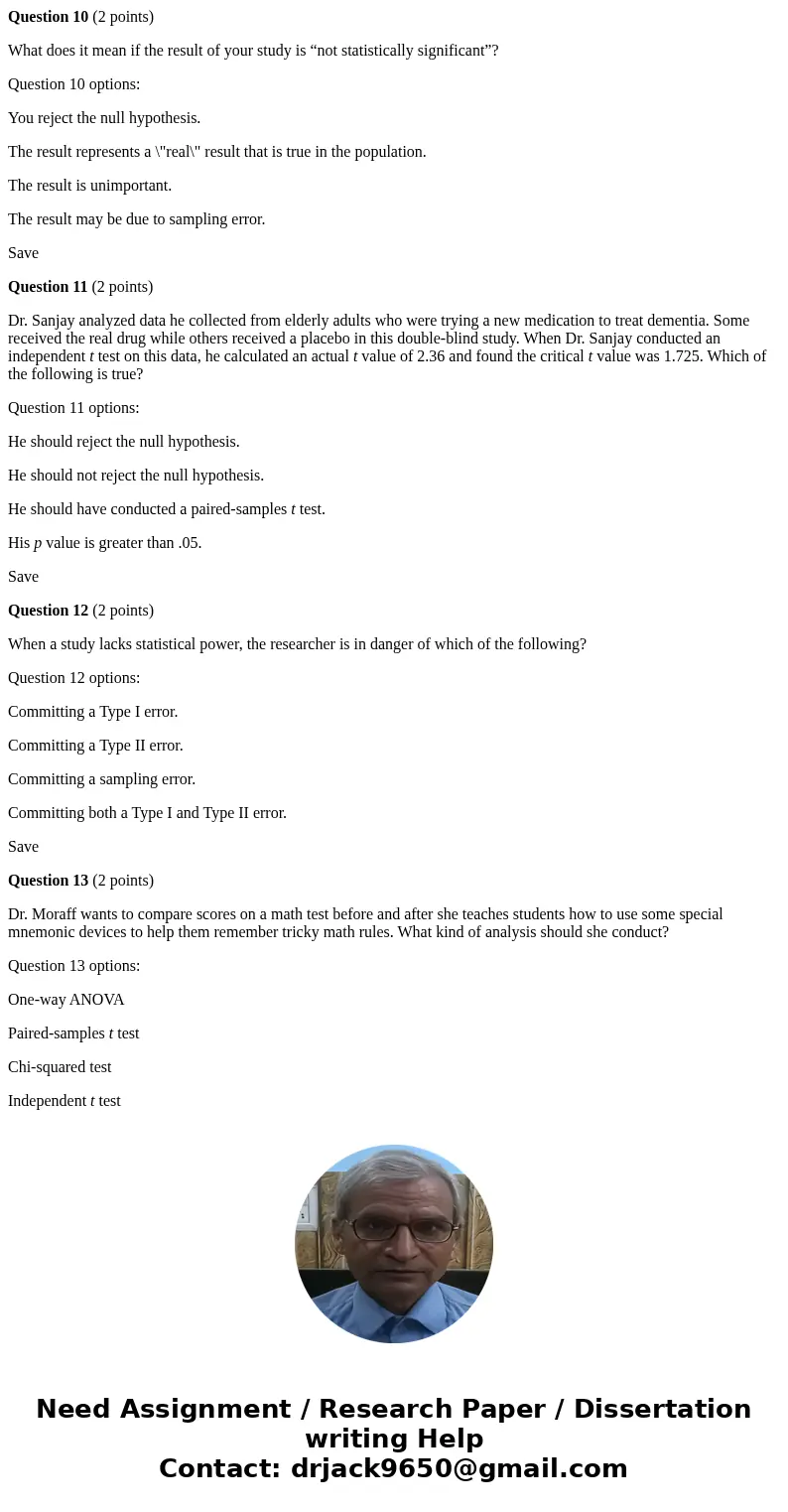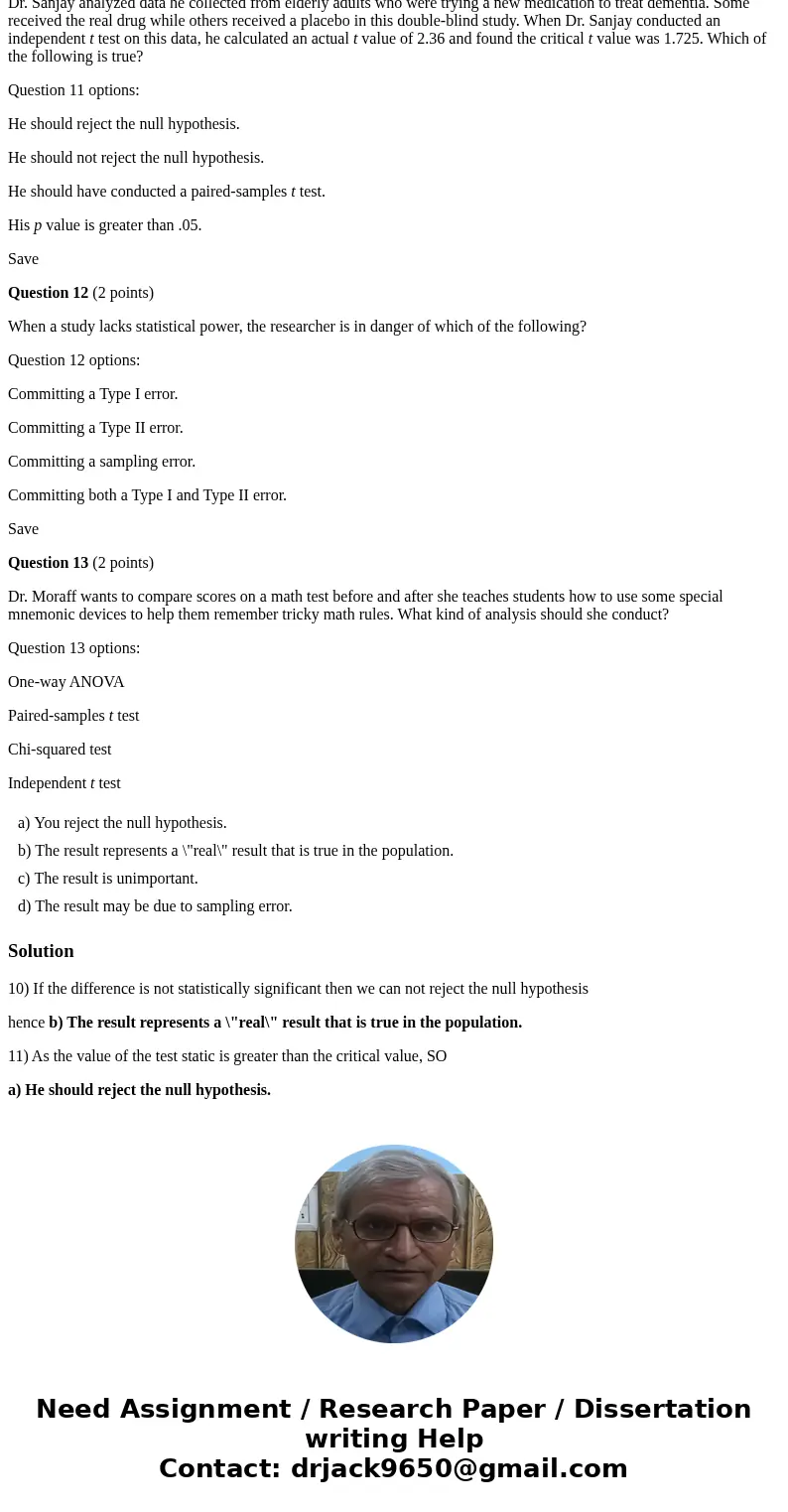Question 10 2 points What does it mean if the result of your
Question 10 (2 points)
What does it mean if the result of your study is “not statistically significant”?
Question 10 options:
You reject the null hypothesis.
The result represents a \"real\" result that is true in the population.
The result is unimportant.
The result may be due to sampling error.
Save
Question 11 (2 points)
Dr. Sanjay analyzed data he collected from elderly adults who were trying a new medication to treat dementia. Some received the real drug while others received a placebo in this double-blind study. When Dr. Sanjay conducted an independent t test on this data, he calculated an actual t value of 2.36 and found the critical t value was 1.725. Which of the following is true?
Question 11 options:
He should reject the null hypothesis.
He should not reject the null hypothesis.
He should have conducted a paired-samples t test.
His p value is greater than .05.
Save
Question 12 (2 points)
When a study lacks statistical power, the researcher is in danger of which of the following?
Question 12 options:
Committing a Type I error.
Committing a Type II error.
Committing a sampling error.
Committing both a Type I and Type II error.
Save
Question 13 (2 points)
Dr. Moraff wants to compare scores on a math test before and after she teaches students how to use some special mnemonic devices to help them remember tricky math rules. What kind of analysis should she conduct?
Question 13 options:
One-way ANOVA
Paired-samples t test
Chi-squared test
Independent t test
| |||
| |||
| |||
|
Solution
10) If the difference is not statistically significant then we can not reject the null hypothesis
hence b) The result represents a \"real\" result that is true in the population.
11) As the value of the test static is greater than the critical value, SO
a) He should reject the null hypothesis.


 Homework Sourse
Homework Sourse